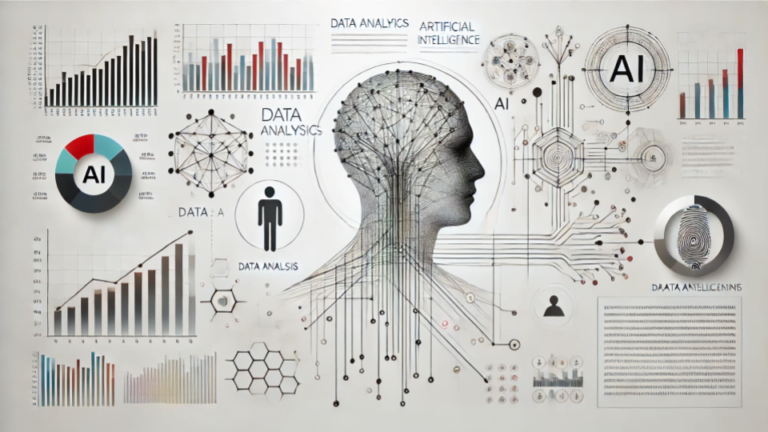GreyOrange: Reason Why Your Next Package Might Show Up in Record Time!

GreyOrange is a global leader in robotic automation, transforming how warehouses operate with smart technology. The company specializes in warehouse automation, providing businesses with intelligent robots and software that optimize fulfillment processes. GreyOrange’s solutions are especially impactful in e-commerce, retail, and third-party logistics, where speed and efficiency are essential. (GreyOrange)
Founded in 2012 by Akash Gupta and Samay Kohli, GreyOrange started in India and has since expanded internationally. Its current headquarters is in Roswell, Georgia, U.S., positioning it close to a booming logistics and supply chain hub. This strategic location helps GreyOrange better serve its global customer base, which includes both Fortune 500 companies and fast-growing businesses.
GreyOrange’s main focus is using artificial intelligence (AI) and robotics to automate warehouse fulfillment. Their software platform, GreyMatter, coordinates robots to manage tasks such as picking, sorting, and inventory organization. GreyMatter is hardware-agnostic, meaning it can work with various robotic systems, enhancing flexibility and efficiency. Alongside their proprietary GreyMatter software, the company’s range of Ranger robots assists in tasks like moving goods to people, aiding in e-commerce order fulfillment, and managing complex workflows.
Founding Bots: How Two Visionaries Gave Warehouses a Robotic Soul
GreyOrange was co-founded by Samay Kohli and Akash Gupta in 2012. Both founders graduated from BITS Pilani in India, where they developed a shared passion for robotics. Their college years were marked by international robotics competitions, notably where they created AcYut, one of India’s first humanoid robots. (AcYut)
Akash Gupta
Akash Gupta has a mechanical engineering degree from BITS Pilani. His time at BITS Pilani laid a solid foundation for his future in robotics. Gupta’s journey began in robotics, where he served in Team Acyut, which developed AcYut, India’s first indigenous humanoid robot at the Centre for Robotics and Intelligent Systems (CRIS). (Akash Gupta)
Samay Kohli
Samay Kohli earned dual honors: a Bachelor of Engineering (B.E.) in Mechanical Engineering (2005-2009) and an M.Sc. in Economics (2008-2010) from BITS Pilani. During his time there, Kohli actively participated in various societies like Network Security Forum, Center for Entrepreneurial Leadership and Department of Lights and Sounds. One of his notable projects was Team AcYut, where he led the development of AcYut. Under his leadership, Team AcYut gained international recognition, placing 6th at Robogames 2008 and competing at RoboOne in Japan. (Samay Kohli)
After university, Kohli and Gupta pursued hands-on experiences in robotics labs, including the CajunBot Lab at the University of Louisiana. Their exposure to cutting-edge robotic technology and mentorship from experienced leaders like Thomas Chance of C&C Technologies laid their foundation to revolutionize warehousing and fulfillment using robotics.
In 2012, Kohli and Gupta launched GreyOrange with limited funds but big ambitions. Kohli initially led the company as CEO, while Gupta led their innovations as Chief Technology Officer. They began by developing robots from scratch, like the Butler for warehouse automation, and later created GreyMatter, an AI-driven software that coordinates robotic tasks in real-time. Their dedication to innovation quickly propelled GreyOrange into global markets. Today, Akash Gupta serves as GreyOrange’s CEO, guiding the company’s expansion and strategic direction.
Robotics on the Rise : Warehouse Automation Market
The warehouse automation market has seen remarkable growth, driven by e-commerce expansion and the need for efficient supply chains. As of 2024, the global warehouse automation market was valued at around $25.74 billion and is expected to grow substantially, reaching $54.53 billion by 2029. This growth corresponds to a compound annual growth rate (CAGR) of approximately 16.2% over the forecast period. (Mordor Intelligence)
Automation in warehouses includes technologies like Automated Storage and Retrieval Systems (AS/RS), robotic picking, and conveyor sorting, which are increasingly essential in high-demand sectors such as e-commerce and retail. Currently, the hardware segment, which includes these systems, represents over 70% of the warehouse automation market, largely due to the demand for fast and accurate order fulfillment.
The rapid expansion of the e-commerce sector, fueled by consumer demand for speed and precision, has led retail and e-commerce companies to invest heavily in warehouse automation. Companies like Amazon and Alibaba rely on these technologies to improve efficiency and meet customer expectations. The autonomous warehouse segment, which operates with minimal human intervention, is projected to grow the fastest, supported by advancements in robotics, AI, and IoT. (Grand View Research)
Regionally, North America and Asia-Pacific are key players in the market. North America, especially the U.S., leads with over 36% market share, driven by its strong logistics infrastructure and high labor costs. Asia-Pacific, led by China, is the fastest-growing region, with countries investing in automation to support booming e-commerce and manufacturing sectors.
GreyOrange’s Blueprint: Making Warehouses Smarter, One Bot at a Time
Mission
GreyOrange’s mission is to redefine modern fulfillment using advanced AI and robotics. They aim to replace outdated warehouse technology with intelligent automation, improving both efficiency and speed in warehouse operations. GreyOrange provides solutions that are responsive to real-time demands, helping companies adapt swiftly to changing market conditions and consumer expectations. (About Grey Orange)
Vision
GreyOrange envisions a world where automation and AI-powered decision-making drive fulfillment. Their approach centers on creating systems that allow seamless collaboration between people and robots, ensuring efficient warehouse management. The goal is to provide fulfillment solutions that adapt to real-world changes, enhancing productivity while reducing operational complexities.
Problems They Solve
GreyOrange addresses key challenges in warehouse operations:
- Labor shortages and high operational costs, especially in high-demand industries like e-commerce.
- Omnichannel integration difficulties, where traditional systems struggle to manage complex supply chains effectively.
- Real-time inventory management, optimizing storage and retrieval to meet faster delivery expectations. GreyOrange’s AI-driven platform, GreyMatter, enables automated real-time decision-making, allowing warehouses to adapt instantly to demand spikes, labor fluctuations, and other dynamic factors.
Business Model
GreyOrange operates on a B2B model, offering both hardware and software solutions. Their products include robotic systems, like the Ranger robots, and their GreyMatter software, a cloud-based AI platform. This software integrates seamlessly with their robotic hardware, which can perform tasks independently or work alongside other systems.
Meet the Bots: GreyOrange’s Star Players in Warehouse Automation
GreyOrange’s solutions focus on integrated automation, which reduces the need for multiple separate systems, providing a cohesive approach to inventory and order management. The concept of “Inventory in Motion” is crucial for managing inventory across channels to meet varying demands for different SKUs and KPI’s.
GreyMatter Fulfillment Orchestration Platform
GreyMatter is GreyOrange’s central AI-powered platform that integrates multiple robotic and human agents for seamless warehouse orchestration. The platform employs machine learning, adaptive learning and real-time algorithmic decision-making to optimize fulfillment workflows and provide real-time decision-making. It can model thousands of variables simultaneously, drawing on historical and real-time data, to dynamically adjust decisions for tasks like order priority, picking paths, and inventory allocation. Their open APIs allow easy integration with third-party robots and systems for use of non-GreyOrange robots within the platform. (Grey Matter)
gStore
gStore by GreyOrange is an omnichannel retail management platform that provides retailers with more than 98% inventory accuracy through real-time insights. gStore acts as a “Google Maps” for inventory, offering precise x,y coordinates for items in the store to prevent stockouts and ensure that store associates and customers know exactly where items are located. It is equipped with overhead RFID, Handheld RFID, real-time theft detection, organized retail crime (ORC) alerts, buy-online, pick-up in-store (BOPIS), ship-from-store (SFS) options and also non-RFID solutions with smart integrations for retailers not using RFID.
By Industry
- 3PL Fulfillment: GreyOrange assists third-party logistics providers in managing multi-client inventory efficiently. With features for real-time order management and capacity scaling, scalable systems allow 3PLs to increase productivity by up to 5x through optimized vertical storage and efficient workforce management. (3PL Fulfillmet)
- Apparel & Retail: This solution dynamically handles high SKU volumes and quick order turnarounds using real-time AI-driven workflows, ideal for rapid seasonal and flash sale adjustments in apparel. (Apparel & Retail)
- Consumer Electronics: Specialized automation ensures precise inventory control and fast, high-value order processing for diverse products. (Consumer Electronics)
- General Merchandise: GreyOrange’s automation manages diverse SKUs across channels, maximizing space and reducing costs by 30%, supporting omnichannel capabilities. (General Merchandise)
- Home Improvement & Superstore: For large, heavy items typical in home improvement, GreyOrange uses smart conveying systems for safe, efficient, high-volume throughput. (Home Improvement )
- Industrial & Manufacturing: Supports complex parts handling with autonomous robots, and Automated systems streamline part storage, retrieval, and dispatch to reduce manual tasks and errors in demanding industrial environments. (Industrial & Manufacturing)
By Function
- Dark Store Fulfillment: GreyOrange enables conversion of closed or underutilized spaces into last-mile fulfillment nodes, allowing fast deliveries from locations close to consumers, reducing costs and delivery times. (Dark Store)
- Ecommerce Fulfillment: This system integrates autonomous mobile robots (AMRs) with GreyMatter to handle rapid order picking, packing, and dispatching, enhancing speed and accuracy during high-demand periods. (Ecommerce)
- Material Handling Systems: GreyOrange’s material handling technology uses automated guided vehicles (AGVs) and conveyors to streamline heavy goods movement, reducing manual handling. (Material Handling)
- Omnichannel Fulfillment: This solution uses a channel-agnostic inventory system, enabling real-time allocation and optimized SKU storage for simultaneous e-commerce and retail order fulfillment. Orders are fulfilled based on priority, supporting real-time demand and reducing stockouts. (Omnichannel)
- Returns Management: GreyOrange automates the returns process with robotic sorting and reallocation features, minimizing handling time. (Returns Management)
By Technology
- Fulfillment Orchestration Platform: The GreyMatter platform is the core AI system coordinating all other GreyOrange technologies. It makes real-time decisions for optimal order fulfillment, enabling fast and accurate responses to inventory changes and demand shifts.
- Assisted Picking Cobots: Assisted picking cobots, like the Ranger Assist, enhance manual picking processes by working alongside warehouse staff. These cobots are equipped with barcode scanners, NFC readers, and dynamic zoning capabilities, which direct operators to their next tasks based on real-time data from GreyMatter. Operators use wearable tech that syncs with the cobots. (Assisted Picking Cobots)
- Goods to Person (GTP): GTP uses Ranger robots and Grey Matter to autonomously deliver items to warehouse employees for picking and packing, minimizing their movement within the warehouse. GTP robots use SLAM (Simultaneous Localization and Mapping) technology to navigate. (Goods to Person)
- Intralogistics AMR: Using LiDAR-based SLAM for precise movement and obstacle detection, handling goods transportation and Flexible Payload Handling within the warehouse, performing tasks like item transfer, inventory replenishment, and staging. (Intralogistics AMR)
- Pallet Mover/Forklift: The Ranger IL-H forklift is an autonomous forklift designed for heavy-lifting tasks, such as moving pallets and stacking inventory in high-density warehouses. They are equipped with sensors to detect surroundings and plan safe, efficient routes. (Forklift)
- Sortation & Smart Conveying Robots: . GreyOrange’s sortation robots streamline the sorting of packages and inventory items to move through the warehouse without bottlenecks, using sensor-based intelligent conveyance systems that can adjust for changes in item type, size, and volume. (Sortation & Smart Conveying )
- Tote-to-Person Automation: Ranger TTP robots move totes vertically and horizontally within a warehouse. This high-density storage solution optimizes vertical space for efficient use of available storage areas. They also allow simultaneous picking of multiple orders. (Tote-to-Person)
Beyond the Orange Curtain: Unpacking GreyOrange’s Technology
GreyOrange’s technology is built on advanced robotics and AI, employing multiple innovations to create efficient and autonomous warehouse operations.
Autonomous Mobile Robots (AMRs) vs. Automated Guided Vehicles (AGVs)
AMRs and AGVs are essential to GreyOrange’s warehouse automation. While AGVs follow fixed paths using physical guides like wires or magnetic tapes, AMRs use advanced onboard technology to navigate freely. GreyOrange’s AMRs utilize LiDAR (Light Detection and Ranging) and SLAM (Simultaneous Localization and Mapping) to detect and map their surroundings in real time, allowing them to make instant path adjustments as needed.
RFID for Inventory Accuracy
RFID uses electromagnetic fields to identify and track tags attached to objects. The system comprises an RFID tag, an antenna, and an RFID reader. The reader emits radio waves, and when an RFID tag passes within range, it transmits its stored data (like a unique ID) to the reader. RFID systems are either passive (powered by the reader’s signal) or active (with their own battery). This technology enables fast, item-level tracking without line-of-sight, ideal for inventory management.
NFC (Near Field Communication) Readers
NFC is a short-range wireless technology that enables data exchange over a distance of a few centimeters. In warehouse environments, NFC readers facilitate quick inventory checks and item verification by communicating with NFC tags on products or packages. The readers can transfer data instantly, enhancing accuracy in item identification, and are particularly effective in close-range applications, such as verifying picked items at specific stations. NFC readers improve efficiency in high-volume areas where fast, close-range data transfer is required.
SLAM (Simultaneous Localization and Mapping)
SLAM is a method that enables a robot to construct a map of an unknown environment while keeping track of its own location within that map. SLAM relies on various sensors, such as LiDAR or cameras, to gather environmental data. The robot’s onboard computer processes this data, enabling it to create a 2D or 3D map while navigating the environment. SLAM is crucial for AMRs in dynamic, complex spaces, allowing robots to avoid obstacles, recognize locations, and adjust routes as needed without predefined paths. This technology provides the flexibility and precision necessary for real-time navigation in dynamic warehouse settings.
LiDAR (Light Detection and Ranging)
LiDAR is a remote sensing technology that uses laser light pulses to measure distances. By emitting laser beams and analyzing the time it takes for them to return after hitting an object, LiDAR creates detailed, high-resolution 3D maps. It is commonly used in AMRs for precise navigation and obstacle detection. In warehouse automation, LiDAR provides accurate spatial awareness, enabling robots to detect obstacles, measure distances, and navigate with high precision. This makes it essential for real-time decision-making in fast-paced environments.
Rising to the Hype: A Trophy Shelf for Robots
GreyOrange has made significant strides in the warehouse automation and robotics industry.
RBR50 Robotics Innovation Award (2021): Robotics Business Review recognized GreyOrange for its groundbreaking autonomous vertical picking solution, developed in partnership with Vicarious. The award, given in the “Application and Market Innovation” category. (RBR50 Award)
Supply Chain Excellence Award with IKEA: GreyOrange partnered with IKEA and won the 2021 “Best Use of Robotics” award at the Supply Chain Excellence Awards. This award recognized GreyOrange’s implementation of Ranger robots and GreyMatter AI to optimize IKEA’s store-based fulfillment operations at its Kuopio, Finland store. (Supply Chain Excellence Awards)
2022 SPARK Matrix Recognition: The company was acknowledged as a ‘Customer Impact Technology Leader’ for its Ranger robots and GreyMatter software. Robotics 24/7
2023 CIO 100 Award: GreyOrange received the CIO 100 Award in the “Game Changers” category for its exceptional work in cybersecurity within supply chain automation by implementing a next-generation Security Operations Center (SOC), an enterprise-level Unified Detection and Response (XDR) system, and a robust Network Operations Center (NOC). (GreyOrange)
In 2024 the company was highlighted as a Sample Vendor in the prestigious Gartner® Hype Cycle™ for Mobile Robots and Drones. This inclusion underscored GreyOrange’s leadership in four key areas: Multiagent Orchestration (MAO), Mobile Sortation Robots, Smart Robots, and Mobile Robotic Goods-to-Person Systems. (Gartner)
GreyOrange also expanded its Certified Ranger Network (CRN) in 2024, introducing the Ranger Forklift XXL for case picking and the Ranger Forklift AnyPallet for handling closed pallets. These innovations were showcased at major industry events, including MODEX 2024. (MODEX)
The Company We Keep : GreyOrange’s Allies in the Automation Ecosystem
GreyOrange has built a strong network of partnerships, helping to expand its influence in warehouse automation and fulfillment solutions. Their influence in the global supply chain sector is evident through partnerships with Fortune 500 companies and expansions to North America, Europe, and the Asia-Pacific regions.
U.S. Warehouse Industry Leaders
GreyOrange has also partnered with eight prominent U.S.-based companies, including Avik Services, Bricz, and UST Global, to expand its technology solutions across various supply chain sectors. (Prominent Partnerships)
Pivotree
GreyOrange teamed up with Pivotree to enhance end-to-end fulfillment capabilities for digital commerce and supply chain management. This partnership merges GreyMatter™ with Pivotree’s warehouse management software (WMS), delivering comprehensive solutions. (Pivotree)
SEKO Logistics
In partnership with SEKO Logistics, GreyOrange is helping to scale up SEKO’s warehouse operations using GreyMatter™ and Ranger™ Assist bots. This integration enables SEKO to handle demand surges efficiently while optimizing operating costs. (SEKO Logistics)
Hai Robotics
GreyOrange’s strategic partnership with Hai Robotics combines GreyOrange’s GreyMatter™ software with Hai Robotics’ automated storage and retrieval systems (ASRS). Together, they streamline fulfillment operations for high-volume warehouses by integrating vertical storage solutions and advanced automation. (Hai Robotics)
Cash-ing in on Robotics: Stacking Profits, One Fiscal Year at a Time
GreyOrange has successfully secured funding across nine rounds, raising a total of $545 million to date. As of September 10, 2020, GreyOrange’s post-money valuation stood at $700 million, making it one of the notable players in the warehouse automation sector. (Tracxn)
Seed Funding (January 15, 2013)
GreyOrange launched its funding journey with a seed round, facilitated by Draper Venture Network. The round was backed by Blume Ventures and BITSAA, along with angel investors Rajesh Sawhney and Samir Sood. This initial support led to a valuation of $1.9 million.
Series A (April 29, 2014)
In Series A, GreyOrange raised $9 million, drawing investments from Tiger Global Management and Blume Ventures. Corporate backing included Videnda, with angel investors such as Sachin and Binny Bansal.
Series B (January 2, 2015)
The Series B round brought in $31.2 million, with contributions from Tiger Global, Blume Ventures, and Blubot I Holdings. Angel investors expanded to include names like Naresh Rajendra Shah and Divesh Kanthylal Makan. This round saw GreyOrange generating $470,000 in revenue.
Series C (August 21, 2018)
GreyOrange secured $140 million in Series C funding, led by institutional investors like Mithril, Tiger Global, and corporate partners Mitsubishi and BTB Venture. Angel investors included industry leaders like Binny Bansal and Narendra Singh Rawat. The company reached a valuation of $386 million, with revenues hitting $33.6 million.
Series C Continued (March 31, 2019)
Another $20 million followed in Series C, bringing GreyOrange’s valuation to $391 million. Mithril remained a primary investor, helping the company reach a revenue milestone of $48.4 million.
Series D (September 10, 2020)
In a Series D round, GreyOrange raised $100 million, achieving a valuation of $700 million. The company reported a revenue of $41.2 million, marking significant growth since the previous round.
Additional Series D (May 17, 2022)
Another Series D injection added $110 million from Mithril. GreyOrange reported a revenue of $24 million, indicating a strategic scaling period supported by strong institutional backing.Also in May 2022, GreyOrange raised additional funds through conventional debt financing, backed by BlackRock.
Latest Series D (December 21, 2023)
In its latest Series D funding round, GreyOrange raised $135 million, supported by Anthelion Capital, Mithril, and state-backed ventures.
Revenue
GreyOrange’s revenue growth over the years highlights its evolving role in the warehouse automation industry. Starting with modest earnings of $0.6 million in FY 2014-15, GreyOrange has increased its revenue exponentially. In FY 2022-23, GreyOrange generated $36.4 million in revenue, reflecting steady growth from $27.5 million in the previous year. Comparatively, the company saw its revenue peak at $63.4 million in FY 2019-20, driven by heightened global interest in automation.
The Future is Automated : Rolling Out the (Grey) Carpet for Innovation
GreyOrange is at the forefront of warehouse automation, delivering innovative solutions that optimize storage, inventory management, and order fulfillment. With its advanced robotics and AI-powered GreyMatter™ platform, the company helps businesses adapt to changing demands, reduce operational costs, and streamline supply chain processes. From small-scale warehouses to global fulfillment centers, GreyOrange’s technologies support efficiency, accuracy, and speed, meeting the complex needs of today’s logistics landscape.
If you have a vision for transforming an industry or solving real-world problems, now is the time to start. Automation and technology are reshaping markets everywhere, and GreyOrange’s journey shows how innovation can drive growth and success.
For more inspiring stories on companies like GreyOrange, check out our other profiles on Venture Kites. Each article provides valuable insights into how companies are shaping the future—don’t miss out!
At a Glance with DORK Company

Dive In with Venture Kites
Lessons From Grey Orange
Leverage Partnerships for Rapid Expansion
The Lesson & Why it Matters: Strategic partnerships can amplify reach and accelerate innovation. GreyOrange’s collaborations with technology and logistics leaders help it quickly expand its capabilities.
Implementation: Seek partners with complementary strengths. Leverage these partnerships for expertise, market access, and technology integration.
How GreyOrange Implements It: Partnering with companies like SEKO Logistics and Hai Robotics enables GreyOrange to extend its automation solutions globally and enhance its service range.
Invest in Cutting-Edge Innovation
The Lesson & Why it Matters: Leading with innovation helps companies stay relevant and competitive. GreyOrange continually invests in technologies like AI, robotics, and data analytics.
Implementation: Dedicate resources to R&D. Encourage a culture of continuous innovation and be open to testing new approaches.
How GreyOrange Implements It: GreyOrange develops new robotic systems, such as the Ranger series, and enhances its GreyMatter™ software to ensure it offers state-of-the-art solutions.
Emphasize Customer-Centric Design
The Lesson & Why it Matters: Products designed with the customer in mind are more likely to succeed. GreyOrange ensures its technology directly benefits end-users, improving productivity and ease of use.
Implementation: Use customer feedback loops to refine products. Conduct pilot tests and adapt based on real-world results.
How GreyOrange Implements It: GreyOrange integrates user-friendly features in its solutions, making them easy for warehouse staff to operate, even in fast-paced environments.
Be Data-Driven from Day One
The Lesson & Why it Matters: Data insights enable better decisions and operational improvements. GreyOrange’s solutions rely on real-time data to optimize warehouse operations dynamically.
Implementation: Use analytics tools from the start. Gather insights from customer data to refine product offerings and identify new opportunities.
How GreyOrange Implements It: GreyMatter™ captures real-time operational data to help clients optimize inventory management and order processing.
Foster an Agile Team Culture
The Lesson & Why it Matters: Agility allows teams to respond quickly to industry changes. GreyOrange’s team adapts to technological advancements and market demands.
Implementation: Encourage a flexible work environment. Adopt agile practices, empowering employees to make decisions and respond to changes.
How GreyOrange Implements It: GreyOrange’s agile culture enables quick shifts in strategy, ensuring the company remains competitive and responsive.
Youtube Shorts
Author Details
Creative Head – Mrs. Shemi K Kandoth
Content By Dork Company
Art By Dork Company
Instagram Feed
X (Twitter) Feed
🚀 @GoGreyOrange is transforming warehouses with cutting-edge robotics and AI! 🤖📦
— Venture Kites (@VentureKites) October 31, 2024
Here’s how they're leading the warehouse automation revolution to make fulfillment faster and smarter! 👇👇#WarehouseAutomation #LogisticsTech #GreyOrange












